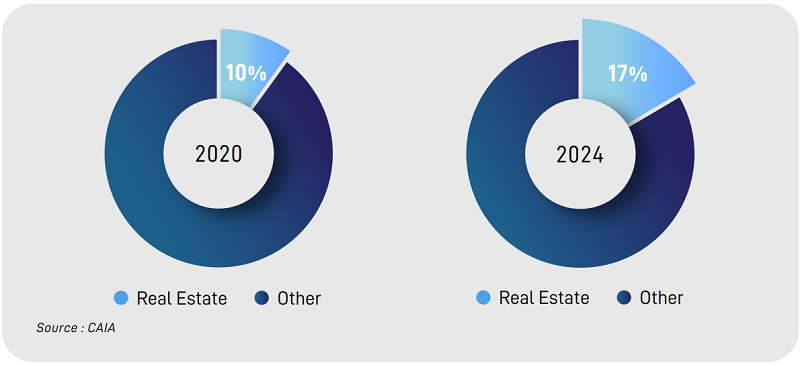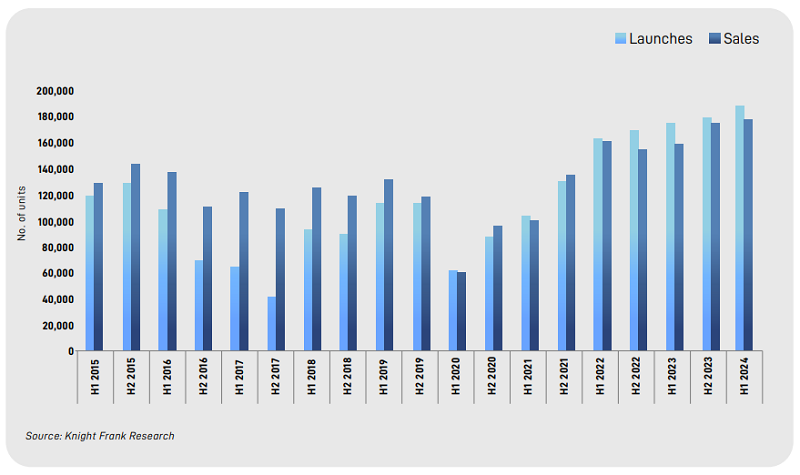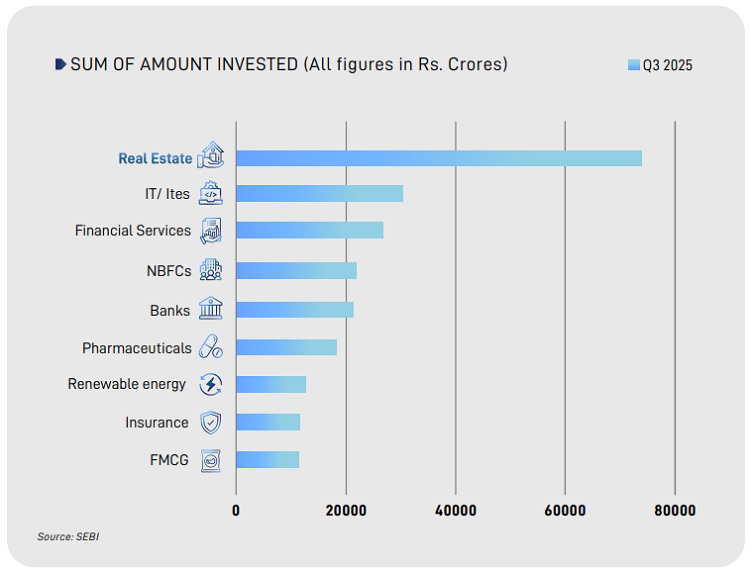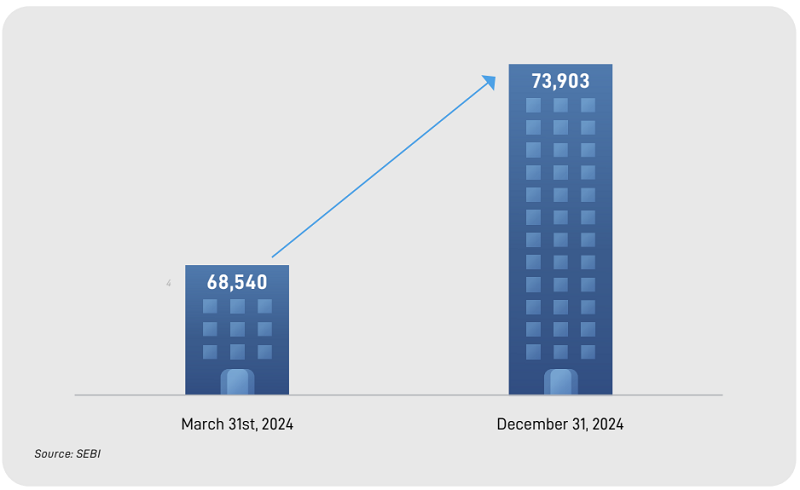
The landscape of global real estate investing has been undergoing a significant shift in recent years. Traditionally, institutional investors and high-net-worth individuals (HNIs) have turned to direct property ownership to gain exposure to real estate. However, the rise of Alternative Investment Funds (AIFs) has revolutionized the way investors approach real estate investments. AIFs provide a more structured, diversified, and liquid alternative to traditional direct investments in real estate, offering exposure to multiple asset classes, geographies, and risk profiles. This has contributed to their increasing popularity across global markets.
Globally, the market for alternative investment funds (AIFs) is expected to nearly double to
$25.8 trillion by 2032, growing at a robust CAGR of 7.9% between 2023 and 20321. In 2024, real
estate represented approximately 17% of the total alternative investment2 market,
a notable increase from its 10% share in 20203, highlighting its significant role within the
broader landscape of non-traditional assets. This share reflects the growing preference for
real estate as a stable, income-generating asset class. From developed economies like the
US, Europe, and the Asia-Pacific region (APAC) to rapidly growing markets like India, real
estate AIFs are redefining how capital is deployed, managed, and exited.
Particularly institutional investors, such as pension funds, sovereign wealth funds, and
family offices are increasingly seeking structured exposure to real estate.
Exhibit 1: Contribution of Real estate in global alternative investments 2020 vs 2024

The sector's relative stability, potential for capital appreciation, and consistent income streams from rental yields have made it an attractive option. Additionally, real estate offers an array of investment strategies, from core assets to opportunistic ventures, catering to different risk appetites. As institutional capital continues to flow into real estate, the sector's share of alternative investments is expected to grow, driven by increasing demand for both physical assets and real estate-focused funds like AIFs. This trend is further bolstered by the global rise in urbanization, infrastructure development, and emerging markets' growing appeal.
India’s growing real estate market is increasingly integrated with global investment trends due to its rapid economic growth, urbanization, digital adoption, innovative technological solutions and evolving investment opportunities. The Indian real estate market is projected to catapult from $350 billion in 2023 to a staggering $1 trillion by 2030 . Several key segments within the Indian real estate market are capturing the attention of investors, particularly through AIFs. The residential sector, with its booming demand in major cities like Delhi, Mumbai, Pune, Hyderabad and Bengaluru, continues to attract significant capital. Since the pandemic, the real estate industry has rebounded across all segments, with the residential market witnessing the fastest and most significant resurgence.
Exhibit 2: Launches and sales trend of residential real estate in India

AIFs in India have seen substantial increase in the number of funds available for investment. Between FY2013 to FY2024, the commitment raised in the AIF sector has maintained an impressive 83.4% compound annual growth rate (CAGR), signalling its growing importance in the broader investment landscape . In the case of Category II AIFs, traditionally, domestic investors have been the primary source of AIF funding, however, foreign portfolio investors (FPIs) are also stepping up.
A total of Rs 5,06,176 crore AIF investments made across sectors till Q3, FY2025. Over the last five years, Category II AIFs have been responsible for nearly 60 per cent of total AIF commitments and real estate’s share was the highest at 14 per cent- totalling nearly Rs 73,903 crore. This highlights the dominance of these flexible and tailored investment vehicles.
Exhibit 3: Cumulative net investment made across sectors by AIFs
(As at the end of the quarter ending Dec 31, 2024)

Exhibit 4: Increase in investment made in Real Estate AIF (end of the quarter)

Real estate has long been a cornerstone of Indian society, traditionally dominated by direct
ownership with high capital needs and regulatory complexities. However, the rise of
institutional-grade real estate funds, particularly Alternative Investment Funds (AIFs), has
transformed the landscape by offering professionally managed, structured investment
opportunities. AIFs provide investors, including HNIs and family offices, access to
high-quality assets without the risks of direct ownership, while also addressing funding
gaps for developers.
Many project developers face challenges in completing projects due to funding gaps, with
traditional financing routes becoming increasingly difficult. Alternative Investment Funds
(AIFs) provide a flexible, non-traditional financing solution, offering customization through
“side letters” that allow fund terms to be adjusted to meet specific investor needs. This
makes AIFs particularly attractive to High Net-Worth Individuals (HNIs) seeking long-term
growth and portfolio diversification.
As the market matures, AIFs are emerging as the preferred investment route, driven by
flexibility, diversification, and a transparent regulatory framework.

7th Floor, B 707, Kohinoor Square, N C. Kelkar Rd, opp. Shiv Sena Bhavan, Dadar-W, Mumbai, Maharashtra. 400028
© 2025 Infradawn Capital. All rights reserved.

